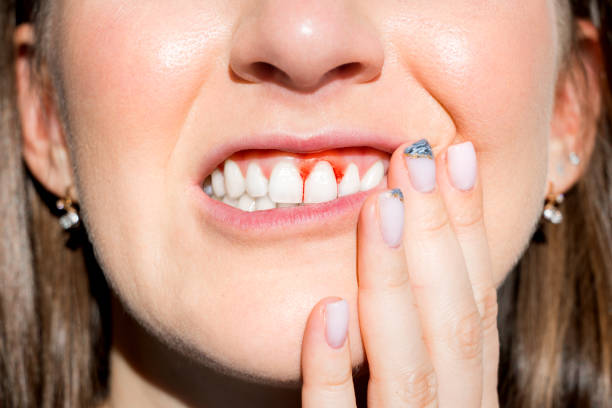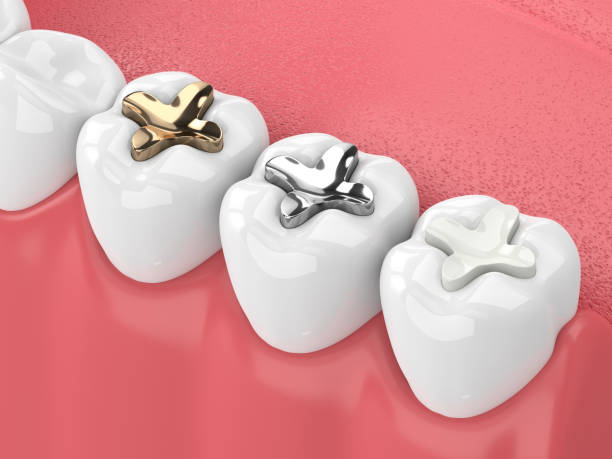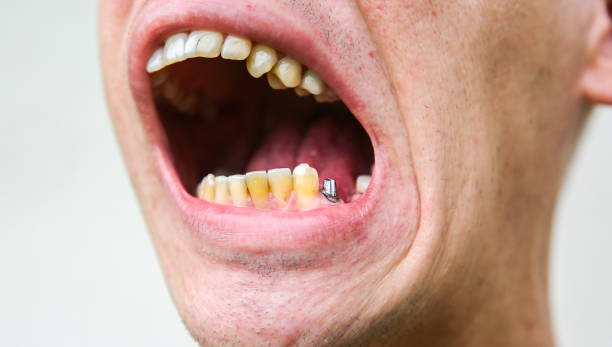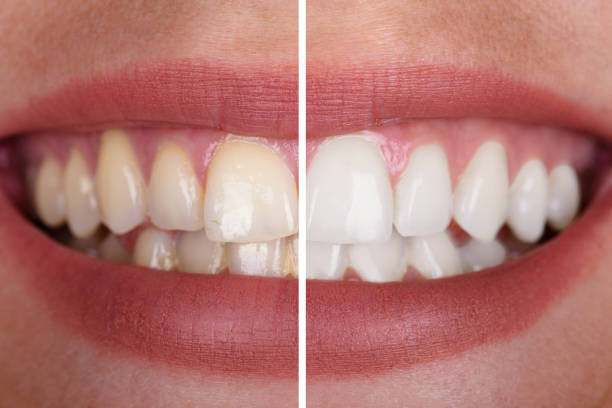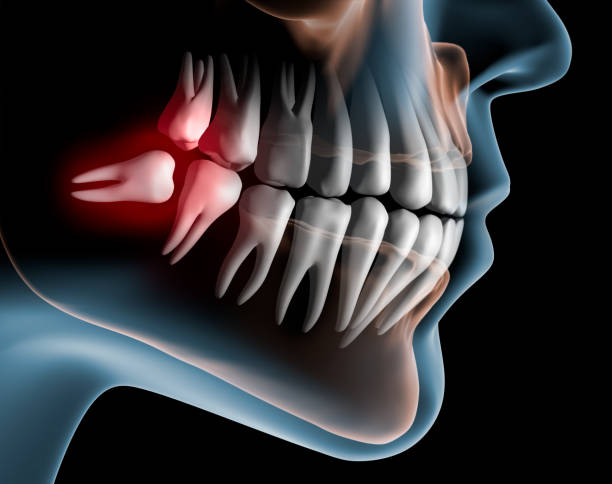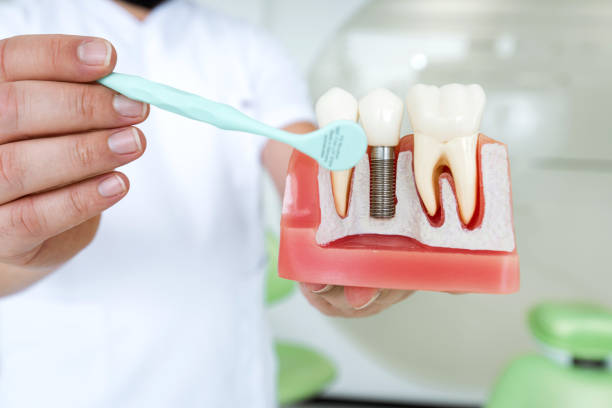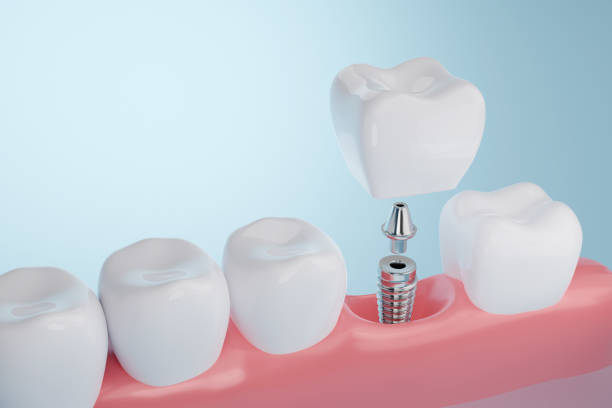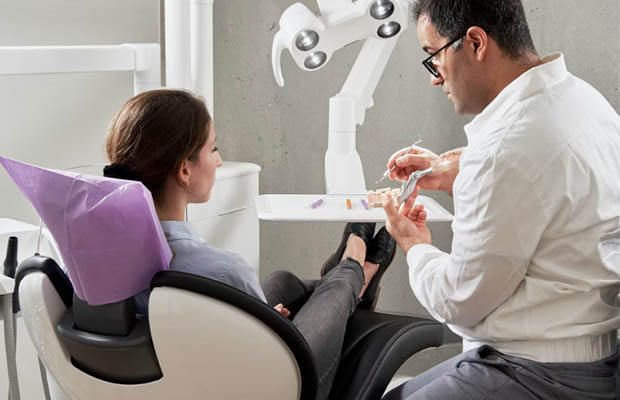An entire denture bridge is supported by All-On-4 dental implants, also known as “teeth in a day” implants. All of your teeth can be replaced with All-On-4 dental implants in just one day, giving you a brand-new smile.
All-on-4 Dental Implants are a ground-breaking method for addressing the issue of multiple missing teeth and reconstructing a patient’s mouth to return to full functionality.
We describe All-on-4 dental implants in detail in this guide, along with what the patient can anticipate. Keep reading!
Table of Contents
What Is All-on-4 Dental Implant?
All-on-4 dental implants are a long-term solution for a healthier smile in contrast to removable dentures. “All-on-4” lets you replace your dentures straight away, without the lengthy procedure for conventional implants.
An entire set of teeth called All-on-4 dental implants are supported by 4 dental implants. In a fixed dental prosthesis with 10 to 14 teeth, four titanium implants provide support. The prosthesis is immediately implanted, allowing patients to replace missing teeth right away. Once in place, your replacement teeth will feel, look, and chew similarly to your natural teeth.
All-on-4 Dental Implant Procedure
The dental surgeon will measure and mark the patient’s top and bottom jaws at the time of the surgical portion of the procedure to make sure that this distance is preserved after the procedure is complete. In essence, this is done to maintain your jaw and facial structure in their pre-procedure positions after the procedure.
The procedure will start once the patient has been put to sleep. The excess or damaged gum tissue will be removed, along with any remaining teeth that are present and any signs of previously lost teeth. To expose the jawbone for ridge reduction, an incision will be made along the length of the ridge on both the top and bottom jaws. The predetermined amounts of bone from the top and bottom arches will be removed to reduce the ridge, and the remaining bone will be smoothed and ready for the placement of the dental implants.
Marking each insertion point on the surface of the bone will be the first step in placing the dental implants. While avoiding contact with any other facial anatomy, such as nerves or sinus cavities, the pilot holes for the implants will be drilled at precise angles to achieve maximum strength and stability. The dental surgeon will replace the gum tissue around the implants and stitch up any openings after the implants have been placed and tightened to the ideal torque requirements.
The abutments that will act as the mounting posts for the prosthetic tooth replacement will now be fastened to the ends of the implants. The contact points where the temporary prosthesis meets the abutments will be marked, drilled, and tested to ensure a tight fit. The temporary prosthesis is now ready, and it will be fastened in place using mechanical fasteners.
The temporary prosthesis will have its holes filled and sealed, and the bite pattern will be examined and confirmed. To ensure the proper occlusion of the top and bottom jaws, any high spots or irregular contact points will now be fixed. Now the healing process can start.

All-on-4 Dental Implants Vs. Traditional Implants
Instead of using anywhere between six and eight implants in each arch, the All-On-4 dental implant technique only uses four implants. The All-On-4 procedure also involves angling the implants, which increases contact by utilizing your bone’s natural support. Furthermore, unlike conventional implant procedures, the All-On-4 procedure does not frequently require bone grafting for many patients.
Benefits Of All-on-4 Dental Implants
- All-On-4 implants mimic the appearance and feel of your natural teeth. They offer a quick and painless way to replace an entire arch of teeth.
- Permanent Solution. All-On-4 presents itself as a long-term fix, in contrast to dentures, which run the risk of coming out in the middle of the day.
- Convenience. All-On-4 requires no sticky dental adhesive and functions like a natural set of teeth, eliminating the need to remove dentures.
- long-lasting and robust. All-On-4 implants are known to last a lifetime with proper upkeep and care once they have successfully fused with your jawbone.
- completion after just one operation. Because the entire All-On-4 procedure is performed during a single surgery, you will feel less pain as a result.
- installation of fewer implants. Long-term savings as compared to single dental implants would result from this, and there would be less recovery time.
Risks Of All-on-4 Dental Implants
- Risks related to anesthesia. This depends greatly on the health risks associated with an individual, as with all surgeries. This refers to any pre-existing conditions that were disclosed during the initial consultation with Nuffield dentists. An open discussion with your dentist can usually prevent anesthesia issues, which are considered to be relatively uncommon.
- Implant failure. This occurs when the implant is rejected by your body, which prevents the All-On-4 implant from fusing with your jaw bone.
- Risk of infection. Any type of surgery carries a potential risk of infection, but these risks can be minimized with the right aftercare. In this particular situation, peri-implantitis, a type of infection connected to implants, would be the infection to watch out for. Symptoms associated with Peri-implantitis are as follows;
- Bleeding or pus.
- A fever.
- Throbbing pain.
- gum inflammation and swelling
- Bad breath.
- having trouble chewing your food.
- The implant feels flimsy.
Read More: Pros And Cons Of Dental Implants
All-on-4 Dental Implants Recovery
The patient will be required to adhere to the accepted standards for oral care after surgery once the procedure is complete. As required, painkillers will be prescribed, and you’ll also get advice on how to maintain good oral hygiene to hasten to heal. The dentist will arrange any necessary follow-up appointments to assess development.
For the first few months after the procedure, the patient is advised to stick to a soft-food diet to allow the implants to fully integrate and bond with the jaw’s supporting bone. Dental implants are made of an advanced composite that is very strong and excellent at creating a strong and secure bond with the organic material that makes up bone. After roughly 3 to 4 months, this bonding process is usually finished, at which point the patient can once more expand their diet to include firmer foods like raw vegetables and nuts.
The patient can return to the dentist’s office after the healing process is complete for another set of impressions that will be used to create the final prosthesis. The dentist will do this by removing the temporary prosthesis and taking impressions of the gums and implants so that the new prosthesis can be fitted specifically to fit the contours of the implants and gums after they have fully healed. The temporary prosthesis will be reinstalled following the impression-taking procedure until the final version is created.
The procedure is now complete, and the patient is prepared to live their life with a brand-new set of permanent replacement teeth.
All-on-4 Dental Implant Cost
The success rate of the All-On-4 procedure has been documented by scientific studies and research published in reputable journals, and this particular dental procedure is starting to gain popularity. Given that it uses fewer implants and does not require bone grafting, this particular treatment has the advantage of being more affordable than other protocols. How much does an All-On-4 Dental Implant Prosthesis cost then?
Comparatively speaking to the more conventional full-mouth implant surgery, the All-On-4 treatment plan is less expensive to estimate. In Singapore, a single arch implant cost ranges from S$12,000 – S$36,000. These represent the procedure’s lowest price range; the price is greatly dependent on the patient’s needs. However at Nuffield, you can claim up to S$5700 for the entire procedure, this is dependent on the type of treatment that the dentist prescribes.
Where Can We Get All-on-4 Dental Implants?
All-on-4 dental implants are a long-term investment, so it’s critical to find a top-notch dentist who offers an exceptional level of care and a dependable dental solution for your dental treatment. Implants that are improperly positioned may require additional, expensive dental work. You can get affordable and capped dental implant fees when you visit a dentist on smile.com.au. There is likely one close to you among the nearly 3,000 smile.com.au dentists in Australia.
Final Words
Think about the impact this procedure could have on someone who has been struggling with the problems caused by missing or lost teeth. Their smile suddenly appears to be brand-new. For them, a wider world filled with incredible food options reopens.
They are able to regain the full mouth function they had previously lost, which restores their self-confidence. We are honored to have offered such a significant change to so many patients.



